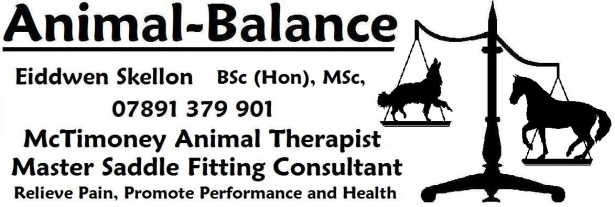Equine Treatments:
Horses are such powerful creatures, yet they can learn to respond to the slightest change of weight in the saddle, differentiate between numerous leg aids and accurately swat the smallest fly from their flanks. As owners we often forget that the horse was never designed to carry the weight of a rider, yet he does so with patience, willingness and trust.
Often horses with 'bad behaviours' or 'schooling issues' are simply reacting to pain or avoiding activities that cause discomfort. Horses with misalignments (and therefore back pain) often present with the following symptoms:
Skeletal misalignments and muscle spasms are often caused by a simple trauma such as slipping in the field or getting cast in the stable, other causes may include:
Compensatory movement plays a large role in the development of muscle spasms and misalignments. When an animal has an injury or underlying condition that causes pain or discomfort, it will naturally try to minimise this discomfort by altering its gait, when this occurs the body is placed under strain as it compensates for the change in concussive forces and movement patterns. For example, a horse with sore front feet will often present with tension and misalignments of the neck where he has 'held himself' to reduce the amount of force being generated through his forelimbs. This compensation may also result in thoracic and lumbar pain as the horse attempts to take more weight on his hind limbs.
Discipline specific problems can also occur. In an ideal world we would all have time to cross-train our horses to provide a balanced exercise regime, unfortunately to excel in a field takes practice and repetition and this ultimately places the body under strain, resulting in muscle tension.
Regular maintenace treatments (every 4-6 months) will ensure that the body maintains correct alignment, promoting even muscle development that will support correct movement and reduce the risk of injuries. |









